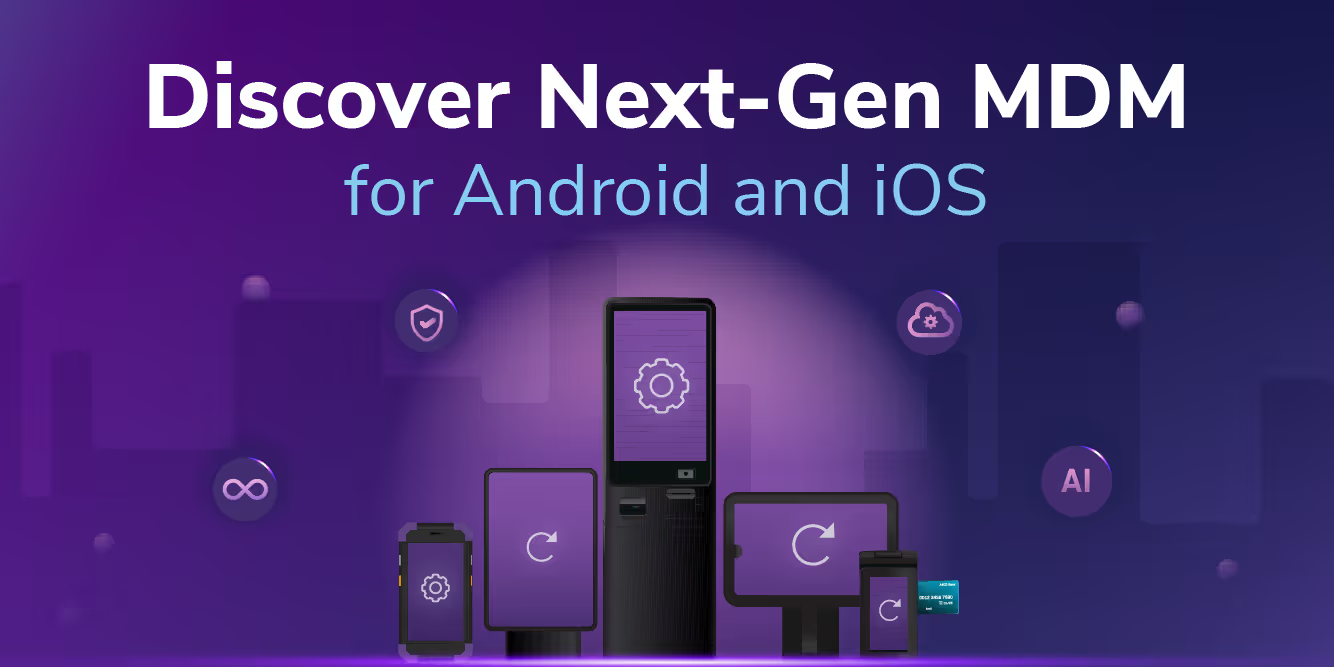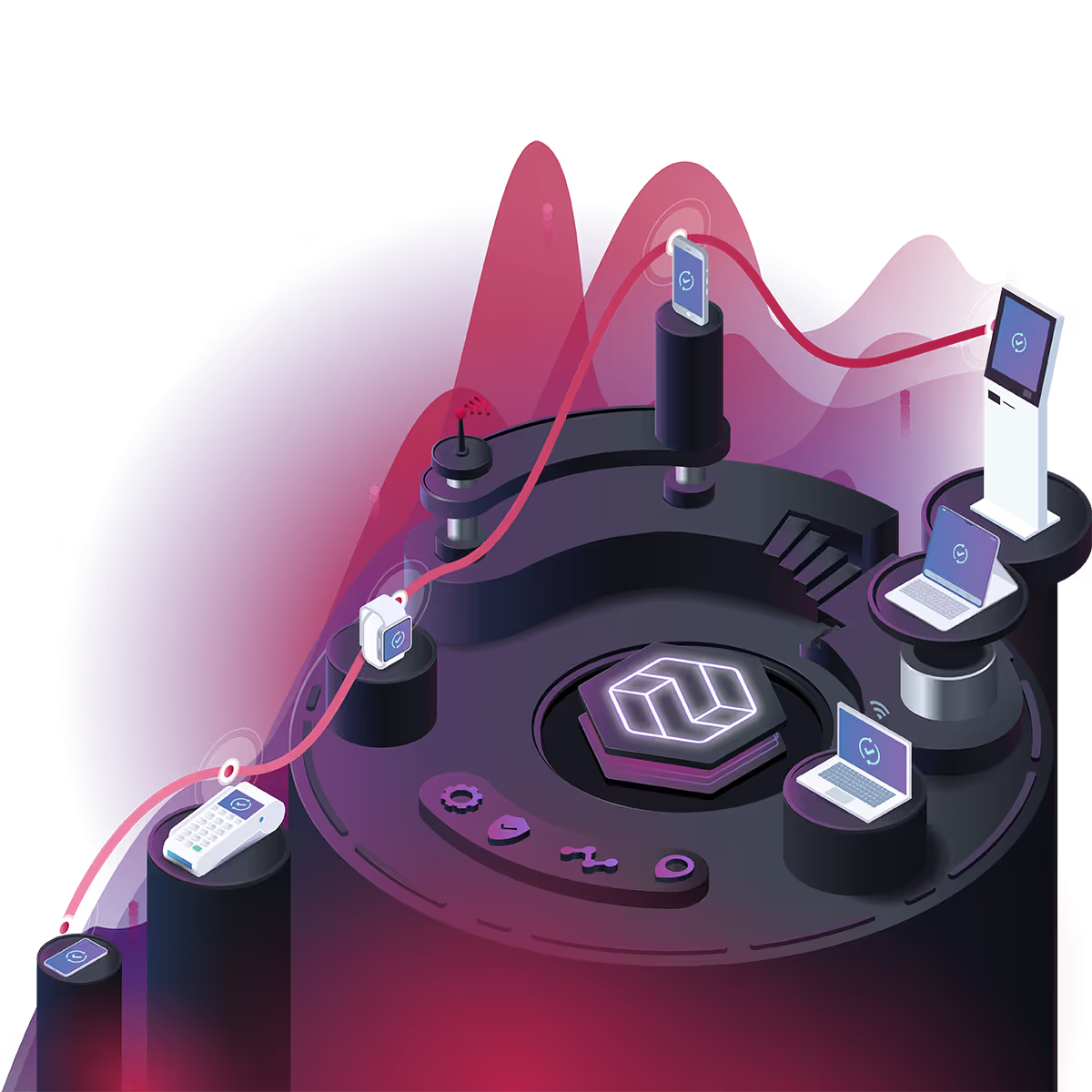For decades, choosing an operating system for managed enterprise devices in consumer-driven industries like retail, restaurants, and healthcare has been viewed in monolithic terms. The rise of mixed OS fleets, though, has largely revealed this as a false choice: More and more businesses are deploying not just one, but two, three, or even four operating systems to enable transformative use cases and customer experiences. The question of the “right” operating system for enterprise devices has evolved beyond form factors and vertically integrated solutions, and into a need to attain orchestration at scale — devices that can be managed, observed, supported, and updated with uniform policies and procedures.
Still, each platform carries its incumbent advantages and disadvantages from a manageability perspective. Some, like Android, offer extremely robust and flexible management hooks and customization for superior control. Others, like iOS and Windows, remain focused on providing unilateral OS update support and a resultantly uniform (and rigid) management layer across device form factors. Linux, meanwhile, comes with hardened security and native remote access, easing operational support and compliance burdens.
How each platform fits into a larger OS choice framework can further be broken down by use case and management needs: Linux offers relatively few advantages for shared employee multipurpose devices like tablets, while iOS is unlikely a good fit for a highly-scaled point of sale terminal at a national quick service restaurant chain.
Android: Offers, All-Around Rapid GTM and Full-Stack Control
Android’s flexibility in form factor, price point, and UX are well documented. One look at the device ecosystem in enterprise environments makes that obvious. From inventory handhelds to point-of-sale devices to display signage to wearables, Android (and its open source parent, AOSP) can be molded to fit a staggering number of use cases.
Android’s flexibility is equally on display at the management layer, though this control extends far deeper than many device vendors may lead you to believe. In fact, dedicated enterprise distributions of AOSP exist, and some even support running on Intel (x86) hardware. When utilizing an enterprise-focused AOSP platform, you can achieve a level of control and UX customization unmatched by any other platform, and do so while maintaining the level of hardware and software support that makes Android so appealing for enterprise device use cases.
Android advantages
- Build bespoke automations for device provisioning and edge software updates for unmatched agility and scalability
- Create highly customized device configuration blueprints that tune your devices for precision use cases
- Leverage AOSP and enterprise management SDKs for deep, programmatic control of hardware behavior not available on platforms like Windows or iOS
- Build across Intel (x86) and ARM (Qualcomm, MediaTek) platforms and manage both seamlessly
- Secure remote viewing, control, and debugging are all achievable
Android disadvantages
- OS update support depends on your hardware vendor (or building your own updates in-house), potentially reducing device lifetime
- Managing Android devices across multiple OS versions will mean maintaining multiple versions of your applications
- Management advantages may not outweigh UX considerations for BYOD / COPE use cases
Android is the right choice when you need deep, customized, and programmatic control over your device environment — the kind of use cases where rapid scale, agility, and bespoke experiences are crucial to success.
Linux: Enabling Embedded and Edge Solutions, Securely
Organizations that choose Linux as the platform for their devices do so with highly defined reasoning and outcomes. And that’s for one, simple reason: They almost always have to build it. In use cases where security, uptime, and remote accessibility are absolutely paramount to success, Linux remains highly favored — and that speaks to its growing popularity as a solution for edge AI and other headless deployments.
Linux finds its best fit in extremely purpose-built environments like manufacturing facilities, mission-critical IoT devices, real-time instrumentation (healthcare, automotive), and AI edge systems. Managing these devices is less about building experiences and more about guaranteeing the reliability, performance, and updateability of hardware with a very specific duty cycle in the field.
Linux advantages
- Native, deep remote access and control — Linux is built to run over secure SSH or VNC protocol, allowing teams unfettered access to devices anywhere, anytime
- Predictability and stability by design, Linux can be built and configured to do exactly what you need and only what you need — up to and including running as a real-time OS
- Security is a given, not a “nice to have”— Linux remains the benchmark for operating in highly sensitive environments, easing compliance burdens
- Deep configurability via custom script deployment that can be automated and programmatic with a modern device management solution
Linux disadvantages
- Managing multiple distributions of Linux can quickly become a headache, with package distribution and custom scripts needing to be managed across device+distro permutations
- Unlikely to reap scalability advantages across multiple device form factors; each will need its own deployment and management strategy
- Difficult (or often, impossible) to manage with many older device management solutions
You know you need Linux because you’ve already eliminated the other options. The question becomes, then, not whether Linux is the right fit, but how best to manage and integrate your Linux devices into your broader device ecosystem. A good solution will plug in with your existing management motions — for example, offering RBAC for features like SSH or VPN, or building device blueprints against your custom scripts.
Windows and iOS: Out-of-the-Box Readiness with Long-Term Support
Many organizations have long-standing and deep relationships with the iOS and Windows ecosystems — not that the two necessarily go hand in hand, but that the reasons for choosing them (from a management perspective) are often quite similar. Both Windows and iOS come with the promise of long-term support directly from the vendor of the operating system, and both deploy unified versions of that operating system across all supported hardware platforms by design (often, for 5-10 years). That means OS update management is a largely hands-off affair, and ongoing security patch support comes standard.
This surety of support makes Windows and iOS a good fit for use cases where “set it and forget it” management is the end goal — what you might refer to as a more traditional device management workflow. When you’re dealing with COPE (corporate-owned, personally enabled) and general-purpose computing use cases, especially, Windows and iOS remain highly favored in the enterprise world.
Windows and iOS advantages
- Centrally managed OS and security updates with guaranteed EOL dates — for high predictability of device lifecycle
- Designed for the most common computing scenarios out of the box, including general-purpose
- Compatible with a large range of ISV and enterprise software solutions, reducing the need for in-house development
- Highly established and play well with most existing device management solutions
Windows and iOS disadvantages
- Extremely limited extensibility and customization — management workflows must be designed within the hooks defined by the OS and / or vendor
- With iOS, extremely limited form factor selection and no third-party hardware vendors — enterprise use cases are restrictive
- With Windows, almost always means relying on an “AIO” (all-in-one) vendor selling a Windows-only software stack, potentially leading to vendor lock-in
Windows and iOS are powerful levers for enterprises with use cases that fit in the hands-off, form factor limited scope these platforms offer. And that’s why they’re almost invariably part of the mix for large device fleets — Windows and iOS are simply the easiest, most straightforward solution for certain use cases.
The question becomes how to ensure those devices are included in your larger device management stack, which increasingly means Android or Linux are in the mix. A good solution lets you seamlessly integrate iOS features like Apple Business Manager and .plist configurations at the management layer, while maintaining deep visibility and control of your Android and Linux devices, too.
Hybrid: The Modern Reality for Enterprise Device Fleets
Most businesses are discovering that it rarely makes sense to be “all in” on a single OS in 2025. In fact, it’s increasingly impossible to run a device OS monoculture without sacrificing business opportunities and slowing your innovation cycle. The age of AIO vendor lock-in is rapidly receding, and the agility demanded of modern enterprises makes putting all your eggs in one basket (OS) a nonstarter.
The challenge that has emerged as this “new normal” proliferates throughout our digital infrastructure, though, is how to scale heterogeneous device motions in a sustainable and orchestrated way. Many IT leaders will simply tell you it’s not possible — chaos is inherent to this period of change, and managing that chaos is an endless triage, requiring a complicated (and frequently, redundant) toolchain to cover every operational need.
As your business crosses the hybridization rubicon, it’s crucial to consider where the weak links in your device management chain sit. And, what features and integrations could help address them. Some questions you can ask your organizational leaders are:
- Do we have a view on integrating iOS, Android, Linux, and/or Windows into a single management layer?
- Is there a path to aligning our shared software or application deployment motions across operating systems?
- Which device platforms present the greatest management challenge? How might an integrated solution alleviate some of those challenges?
- What is our level of visibility across each device operating system we manage, and where do we have visibility gaps?
- Which device platforms are creating the largest support burden, and would a unified management layer help alleviate some of that burden?
Device management in 2025 is a core architectural layer of the enterprise business technology stack — not merely an IT and ops interface. Making this cultural shift can align your organization’s product, IT, ops, and go-to-market on how to cooperate to enable the best possible outcome for device strategy, expansion, and innovation.
Discover Device Management for Multi-OS Edge Device Fleets >
FAQ
Keep Exploring






.png)











